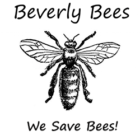Plants For Bees
by Anita Deeley at BeverlyBees.com
Keep reading to learn all about the best plants for bees, the time of year they are available and how to plant a bee friendly garden. All these plants are great bee forage and the best pollen and nectar producers for bees and native pollinators in the Northeastern United States. There may be additional bee plants in your area. This page is a work in progress so check back soon for updates.
How To Plant A Bee Friendly Garden
Attract honeybees into your yard by planting a bee friendly garden. Your vegetables will thank you! Click Here To Learn How To Plant A Bee Friendly Garden.

Late Winter and Early Spring Forage For Bees
These bee plants bloom in late winter and early spring. They are great sources of pollen and nectar when not much else is available for bees to forage on. Pollen is essential for brood rearing this time of year when bees are coming out of a long winter and need to rebuild their population for the honey flow.
Snowdrops: Winter Forage For Bees
Learn how to plant snowdrops and what their benefits are to honey bees and native pollinators. Click here to learn how to Plant Snowdrops For Bees.
Blooms: Feb/March Bee Forage: Pollen & Nectar Pollen Color: Yellow Orange
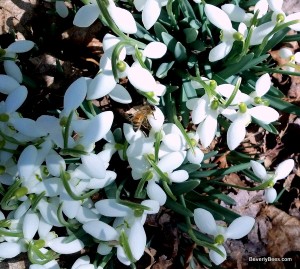
Eastern Skunk Cabbage: A Heater For Bees
It’s flower may be stinky, but Eastern Skunk Cabbage is a wonderful flower for bees and native pollinators. It provides pollen, shelter and warmth for foraging bees.
Blooms: Feb-April Bee Forage: Pollen Pollen Color: Light Yellow
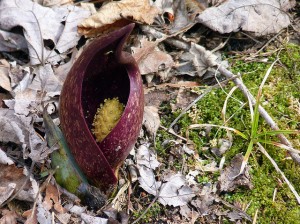
Siberian Squill: Beautiful Blue Pollen
Siberian Squill’s steel-blue pollen is stunning, it is a wonderful early spring food source for bees and easy to grow.
Blooms: March/April Bee Forage: Pollen & Nectar Pollen Color: Blue
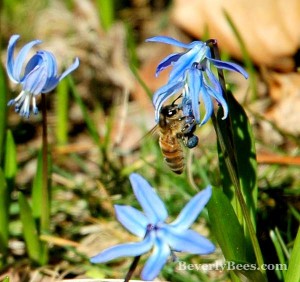
Crocus: Early Spring Forage For Bees
Spring blooming crocuses provide one of the first pollen sources of the year in many locations at a time when not much food is available for bees to gather.
Blooms: March/April Bee Forage: Pollen Pollen Color: Orange Yellow
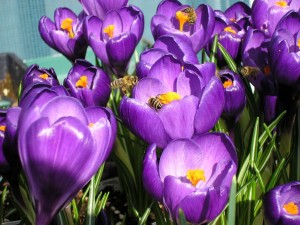
Copyright © 2011-2014. Anita Deeley, BeverlyBees.com. All rights reserved.
